You should consider several factors when choosing the grip size of a pickleball paddle, such as the handle shape, the type of grip, and whether or not you will use an overgrip. There are usually half or whole sizes (1/16 to 1/8 inch) added to the racquet with an overgrip. In addition to that, if you do decide to use an overgrip, you will want to choose a paddle that is half a size to one size smaller, depending on what type of overgrip you plan to use.
How to determine pickleball paddle grip size [Tips]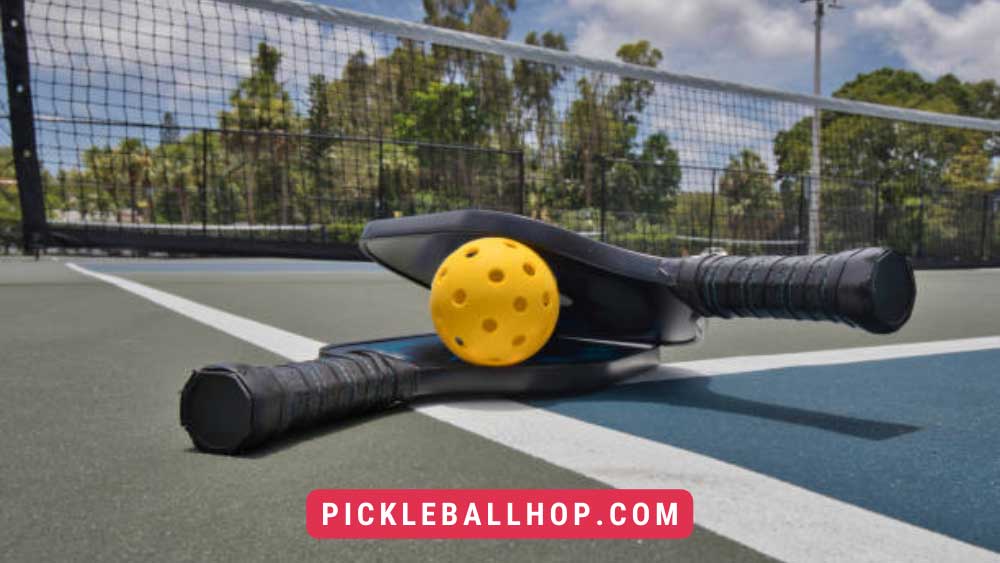
- Overgrips can be used to increase the size of the smaller one, rather than the bigger one if you are stuck between the two
- When you squeeze the paddle handle, you will need to use more force, so don’t use a paddle that has a small grip. You may suffer from fatigue and tendonitis in your hand, forearm, and elbow as a result of this.
- Using a paddle with a large grip will restrict your wrist’s movements, make changing grips more difficult, and require more strength.
- You should choose a grip size that is just large enough for you to play comfortably and allows you to move freely
How to measure grip size for pickleball paddle? To measure the size of your paddle grip, either uses your index finger or ruler; however, if you use your index finger, you will need a paddle.
Index Finger Test
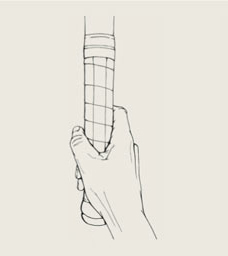 The Eastern grip should be used with a pickleball paddle when it’s held with your dominant hand. If you’re not familiar with the Eastern grip, it’s when the index knuckle rests on the third bevel. Therefore, your palm will be aligned with the string’s bevel.
The Eastern grip should be used with a pickleball paddle when it’s held with your dominant hand. If you’re not familiar with the Eastern grip, it’s when the index knuckle rests on the third bevel. Therefore, your palm will be aligned with the string’s bevel.
After achieving the Eastern grip, slide your index finger between your ring finger and palm with your other hand. If your index finger fits snugly within this gap, this is the paddle grip size that is right for you. Having a grip that is either too big or too small means you have insufficient or too much room.
Just to be sure, repeat the finger test several times once you’ve found a snug fit. To confirm accuracy, more than one test must be performed. This is called the scientific approach. Taking a deep breath after finding a paddle that fits well is a good idea. Is that what you smell? It’s the smell of victory.
Ruler Test
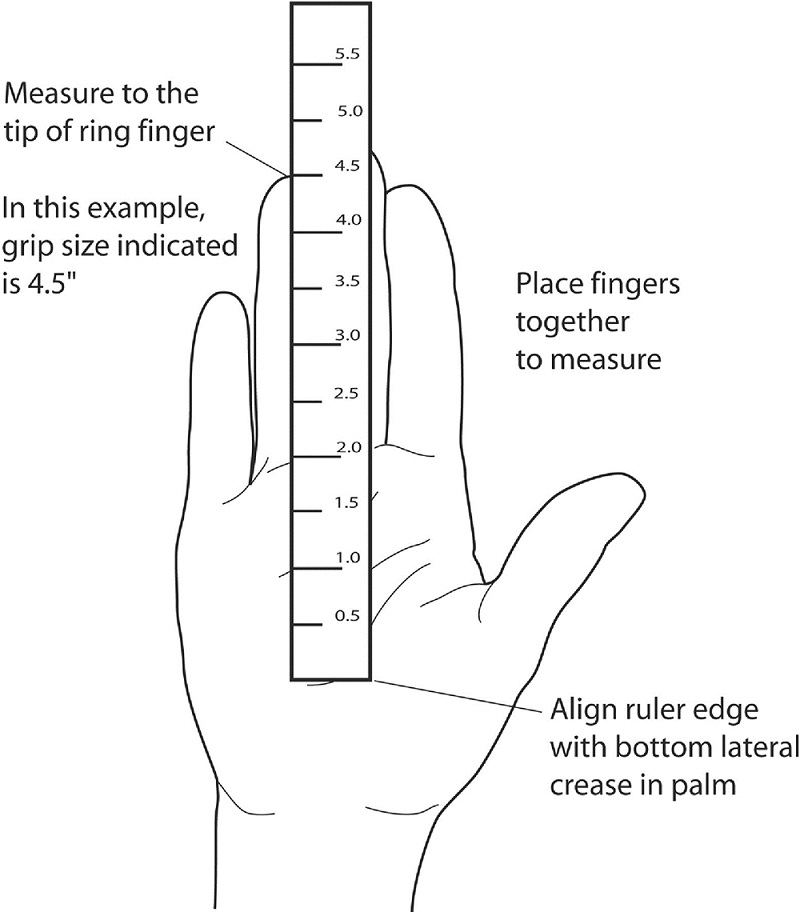 Second, you can use a ruler to measure the grip size of your tennis racquet. Using your dominant hand and a ruler, you can accomplish this task. In order to start, extend your fingers and keep them close together while opening your hand. Line up your ruler so that one end is parallel to the bottom of the palm’s second crease (or middle), with the other end in line with the palm’s third finger (ring finger).
Second, you can use a ruler to measure the grip size of your tennis racquet. Using your dominant hand and a ruler, you can accomplish this task. In order to start, extend your fingers and keep them close together while opening your hand. Line up your ruler so that one end is parallel to the bottom of the palm’s second crease (or middle), with the other end in line with the palm’s third finger (ring finger).
Using this measurement, you can determine what size paddle grip you need. There should be a difference between 4 and 5 inches in length.
You may enjoy reading: Best Padel Rackets
Measurement of Grip Sizes
How to measure grip size for pickleball paddle? A pickleball paddle grip is typically measured between 4 and 5 inches from the middle of the handle. A racquet’s circumference, including any grip applied, is defined as the distance around its edge.
Depending on where you live, the grip size of your racquet may differ slightly, so below you’ll find a handy chart that covers the various grip sizes.
| US Sizes | European Sizes | Sizes in mm |
| 4 inches | 0 | 100-103 mm |
| 4 1/8 inches | 1 | 103-106 mm |
| 4 1/4 inches | 2 | 106-110 mm |
| 4 3/8 inches | 3 | 110-113 mm |
| 4 1/2 inches | 4 | 113-118 mm |
| 4 5/8 inches | 5 | 118-120 mm |
| 4 3/4 inches | 6 | 120-123 mm |
Grip size: Why does it matter?
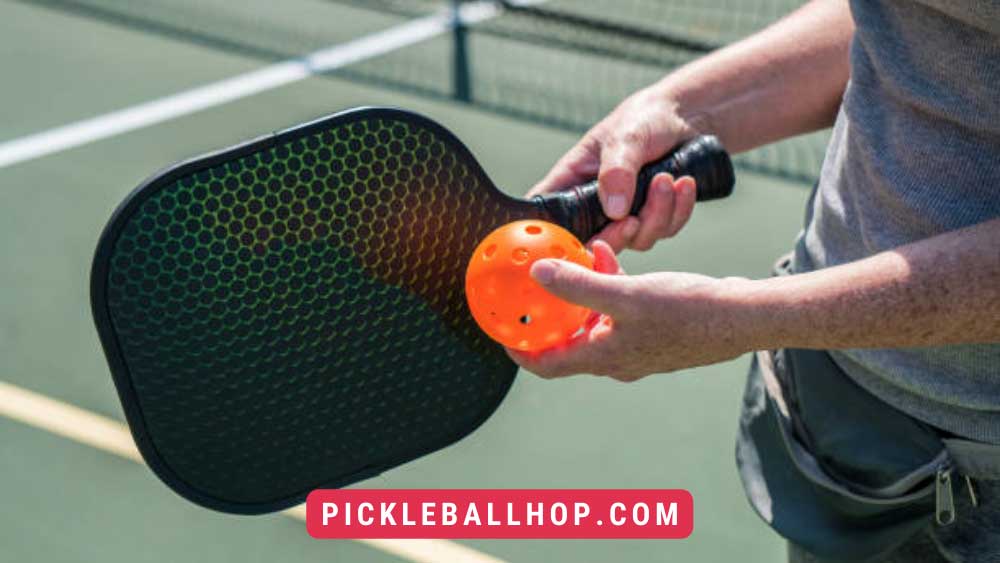 A grip that is the proper size can provide you with a great deal more than comfort. It can also prevent injuries that could occur from playing pickleball with a grip that is too big or too small for a prolonged period of time.
A grip that is the proper size can provide you with a great deal more than comfort. It can also prevent injuries that could occur from playing pickleball with a grip that is too big or too small for a prolonged period of time.
Squeezing the handle to keep the racquet firmly in place will require more energy from your hand, wrist and arm if the grip size is too small. Tennis elbow and other injuries can result as a result of this over time. It is also likely that you will find yourself losing your grip frequently with a grip that is too small.
It’s also common to struggle to hold a grip that’s too large, which can put too much stress on your wrist, arm, and hand. As well as restricting movement when serving or hitting an overhead, a large grip can make it difficult to change grips quickly or snap your wrist when changing grips quickly.
Choosing the right grip size will ensure that you are comfortable, won’t put undue strain on your body, and will allow you to move freely.
Choosing the Right Grip Size
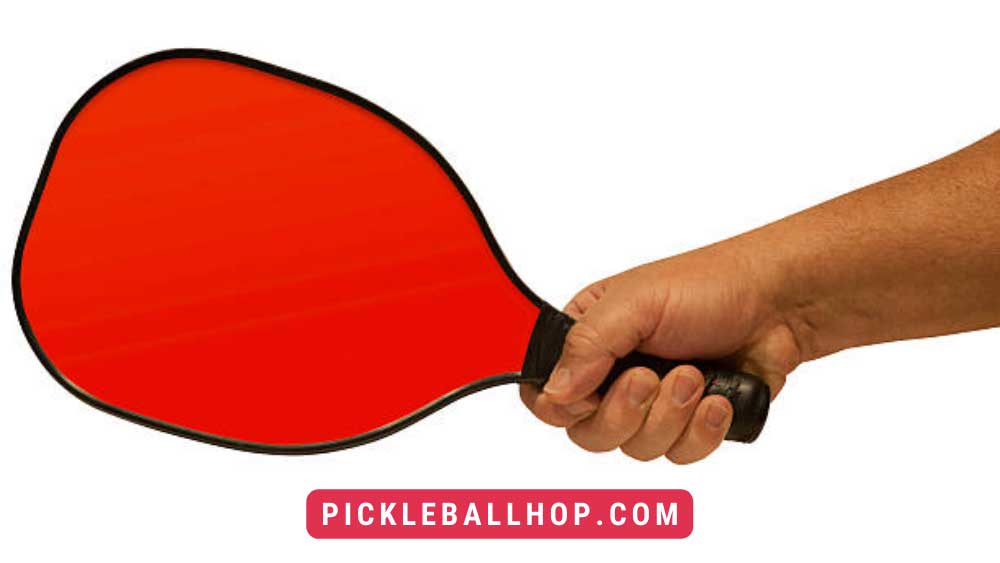 To determine an individual’s optimal grip size, two common methods can be used. My recommendation is to use both instead of just one to ensure the best fit.
To determine an individual’s optimal grip size, two common methods can be used. My recommendation is to use both instead of just one to ensure the best fit.
Get a ruler or measuring tape first, if you have one. If you examine your palm, you will see a bunch of lines and creases running through it. There are two large or prominent lines running horizontally across the middle of your palm, one on top and one on the bottom.
You should line up the bottom (the part of the ruler hitting your palm) with the bottom horizontal line on your palm when you hold the ruler or measuring tape vertically. Using your ring finger as a guide, measure to the top.
There should be a difference between 4 inches and 5 inches in the measurement.
With a continental grip, grab the paddle handle that matches the size of the paddle grip you measured.
By now you should be able to stick your index finger between the tip of your middle finger and the palm of the hand that does not hold the racquet. You’re probably on the right track if it fits.
To determine whether the grip you have identified fits you well, grab the bigger racquet grip size and then the smaller one to get a feel for it. Holding on to each paddle will be all you need to know for many players. There should be a sense of comfort and security in it.
You may enjoy reading: Best Pickleball Paddles for Beginners
Some players may feel as though they are in the middle of two sizes. If you fall into that category, consider going down a size. The simple addition of an inexpensive overgrip can make a grip feel perfect in a variety of ways. The process of reducing the grip size is, however, more difficult and sometimes impossible.
The tacky feel in the hand is also maintained by changing overgrips every few games. You shouldn’t hesitate to go smaller if you’re on the fence about a larger size. You can add an overgrip freely if the grip is a bit smaller, as they usually add about 1/16 of an inch.



